Forum Replies Created
-
AuthorReplies
-
I think Roger is happy that every movie doesn’t look like he shot it! Variety is the spice of life as they say.
First of all, shallow focus has been available to filmmakers ever since the 1930s, low or high-budget, when f/2.0 lenses became available for cinema. Unless you are talking only about digital cameras when 35mm sensors appeared in the mid-2000s with the Panavision Genesis, but low-budget filmmakers had access to the Red One by the late 2000s, so I’m not sure why you picked 2010 as a date for shallow-focus being available for smaller movies.
Second of all, I don’t know why a visual effects scene shot on a volume or against a green screen, etc. would be more realistic and less “CG” if the focus was deeper. And that frame from “The Batman” that you posted doesn’t look like it was grabbed from the blu-ray so I’m not sure that is the correct color timing.
Shallow and deep focus filmmaking follows trends and both approaches can be used well or inappropriately. The 1930s was a time where shallow focus and lens diffusion was popular, to the point where sometimes it was used when sometimes it shouldn’t have been. Then after the critical reaction to “Citizen Kane”, you sometimes saw deep-focus used when it wasn’t always necessary, or caused the lighting to look artificial due to the high levels required.
But after fast f/1.4 lenses arrived in the 1970s, you saw plenty of low-budget movies with shallow focus.
I think in the case of “The Batman”, as with other Greig Fraser works lately, the shallow focus works well for creating a certain dreamlike mood or a feeling that one is trapped in the headspace of a character (it worked well in Roger’s “Empire of Light” as well). But certainly we are in a time where shallow focus is trendy to the point where it gets used indiscriminately even on big-budget projects just because it is “pretty”.
Our minds can “zoom” in on some detail, like spotting a face in a crowd from a distance — flying in on a drone across a stadium to a face in a crowd wouldn’t really make sense for a POV of someone who can’t move in that direction.
From Wikipedia:
The f-number N is given by:
N = f/D
where f is the focal length, and D is the diameter of the entrance pupil (effective aperture). It is customary to write f-numbers preceded by “f/”, which forms a mathematical expression of the entrance pupil’s diameter in terms of f and N. For example, if a lens’s focal length were 10 mm and its entrance pupil ‘s diameter were 5 mm, the f-number would be 2. This would be expressed as “f/2” in a lens system.
But focal length isn’t really a measurement of the physical length of the lens, it’s the distance from the optical center to the sensor plane when the focus is at infinity, and the aperture size is not the measurement of the size of the hole by measuring the back of the lens but is the “effective aperture” size as seen through the front element. So this is why lenses can vary in size even though they might all be a 50mm.
But if you put a 50mm lens set to f/2 on cameras with different sized sensors, it’s still f/2 exposure-wise just as if you only had one sized sensor and then cropped in post to smaller areas.
It’s a misunderstanding when people commonly say that focal length creates perspective effects. Perspective on landscapes and faces is determined by camera position and distance to the subject. It’s not even a camera issue — take a walk in the mountains. You see a boulder on the hill you are standing on and there is a distant mountain peak. As you walk closer to the boulder it gets relatively larger compared to the distant mountain. It’s the same thing with a face — get closer and the distance from your viewpoint to the nose changes but the distance from the nose to the ears is a constant, so the nose gets relatively larger compared to the ears as you get closer. What the focal length provides is the view of the subject, how tight or wide it is, the degree of magnification or expansion.
So if you match distance and you match field of view between formats by using the equivalent focal lengths, you get the same image more or less. What’s different is the depth of field, because the larger formats need longer focal lengths to achieve the same view, there is less depth of field unless you stop down the lens (by the same amount as the conversion factor, so if the factor is 1.5X then you’d stop down the equivalent lens on the larger format by 1.5-stops to match the depth of field of the smaller format.)
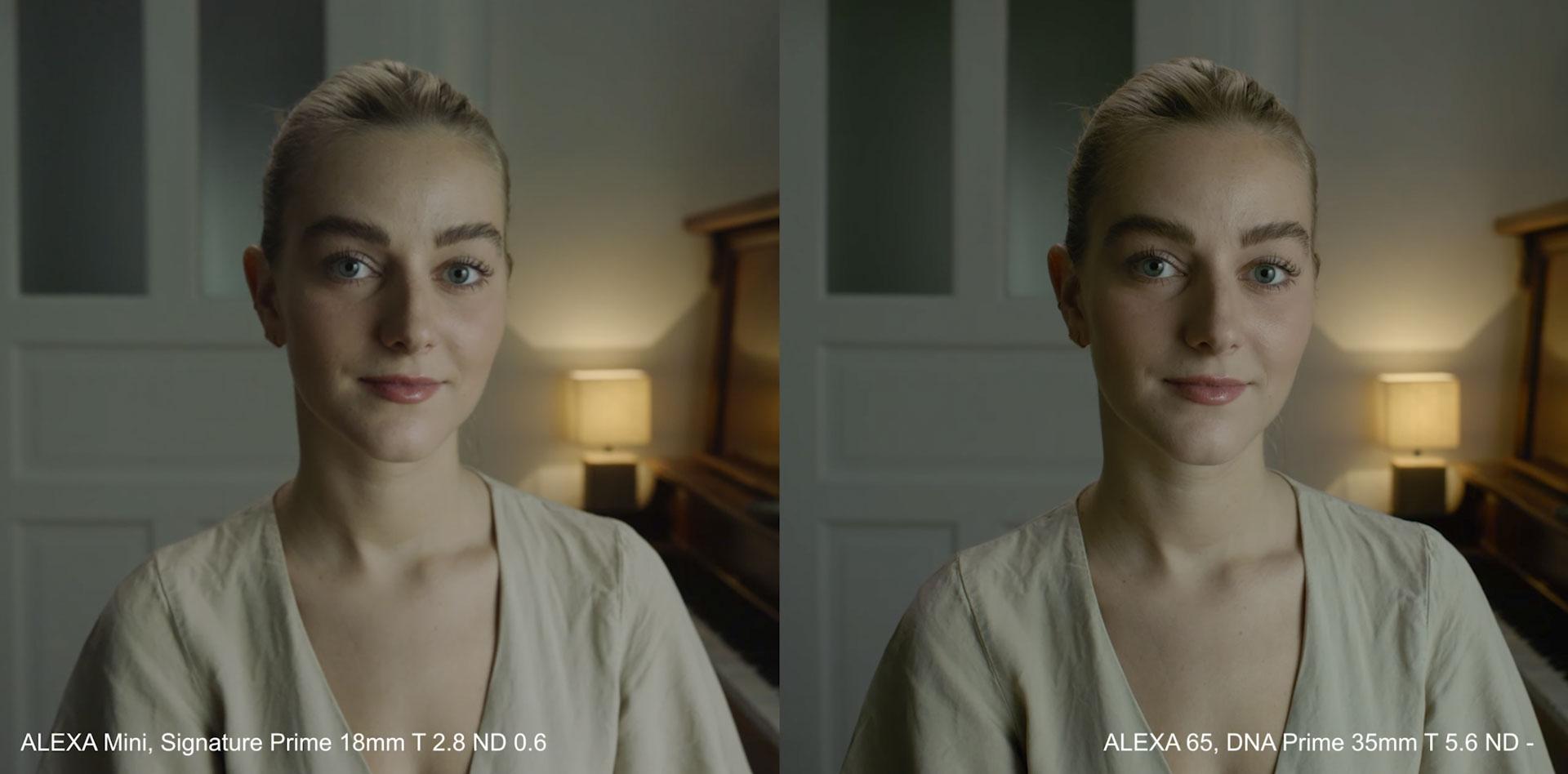
To calculate the equivalent focal lengths in terms of horizontal view, find out the width of the sensor area being used and divide the larger number by the smaller number to get the conversion (crop) factor.
Generic figures of 24mm wide for Super 35 and 36mm wide for Full-Frame 35 means you divide 36 by 24 to get 1.5. So that’s the conversion factor. To get a matching horizontal view you’d multiply the Super35 lens by 1.5 to get the equivalent view in FF35. So a 32mm lens in Super35 has the same view as the 48mm in FF35.
But to be more precise you need the actual widths of the sensor areas being used. Open Gate on a classic Alexa is 28.25mm and on the Alexa 35, it’s 27.99mm. Open Gate on the Alexa LF is 36.70mm. So if you were comparing a classic Alexa to an LF, both using Open Gate ARRIRAW, you’d divide 36.70 by 28.25, which is 1.3. So a 32mm lens on a classic Alexa would have to be a 41.6mm on an Alexa LF if you wanted to match the horizontal view.
Being a keen observer of natural and practical light is an important skill.
There’s no right or wrong answer here. Some people want a clean image and will try to work at lower ISOs, others either want some noise or have to work in low light level conditions and will use a high ISO.
Surely whether a light looks moody at 10% or 100% is also a matter of ISO and f-stop chosen — after all, you can expose 10,000 foot-candles of full sunlight so that it looks like the .1 foot-candles of moonlight.
But you select an ISO and f-stop you like for noise & depth of field, then the light looks correct dimmed to 10% on your monitor/viewfinder, then what’s the problem?
When I was a beginner shooting on Super 8 film, I had one big light, a 650w open-faced tungsten made for Super 8 filmmakers. I did a short film on Plus-X b&w reversal, which was only 40 ASA and shot a moonlight scene using that light. Someone saw my short and said “wow, you worked in very dim light!” I was scratching my head because I worked in very bright light, it was just exposed to look dim.
If you are shooting digitally, you could try setting your camera to the ISO/shutter speed/f-stop you’d like to shoot at, turn on the LED lights at full, then by looking at an accurate monitor or your viewfinder if it has some exposure tools (zebras or false colors), start dimming the lights down individually until you like it.
November 16, 2023 at 8:50 pm in reply to: Desert Chase at Dawn scene in No Country for Old Men #215269OK, so three images didn’t work, I guess two is the limit.
Anyway, for the third time… I don’t think that chase scene in NCFOM is an example of day for night, it’s a night for night scene that goes into twilight for breaking dawn. The frames I just posted above are from “Yellow Sky” (1948), which has a lot of day for night shot on b&w infrared film by Joseph MacDonald. One artifact is that Gregory Peck’s black shirt goes grey due to IR pollution from the dyes in the fabric.
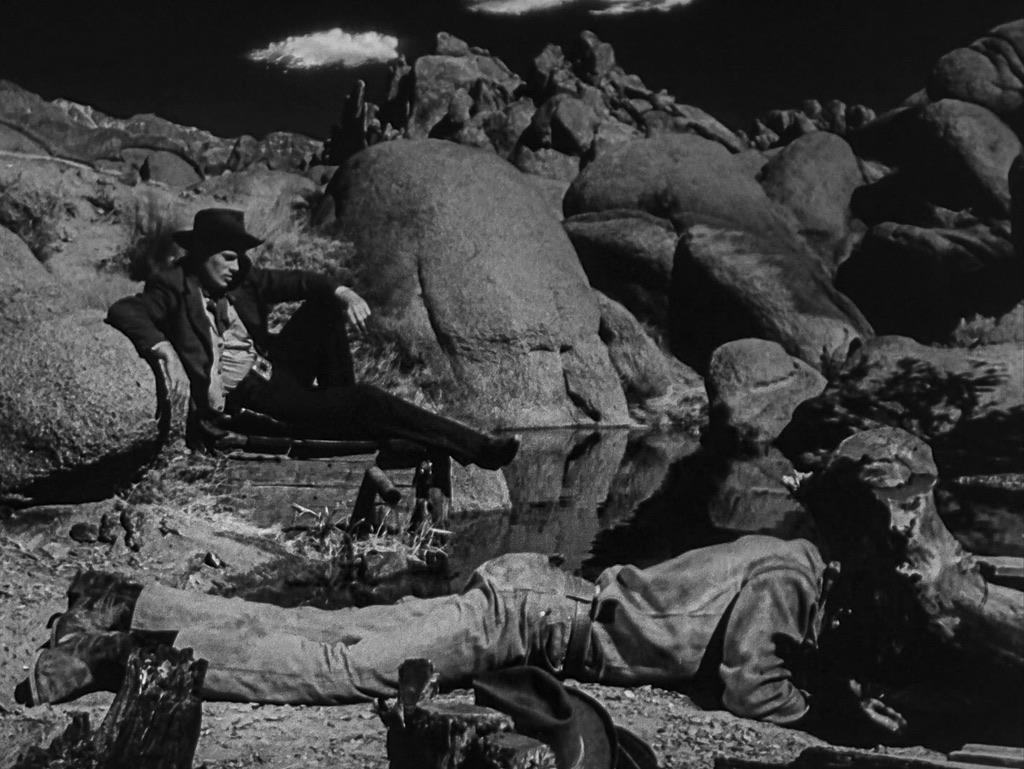 November 16, 2023 at 8:45 pm in reply to: Desert Chase at Dawn scene in No Country for Old Men #215267
November 16, 2023 at 8:45 pm in reply to: Desert Chase at Dawn scene in No Country for Old Men #215267OK, one image works…
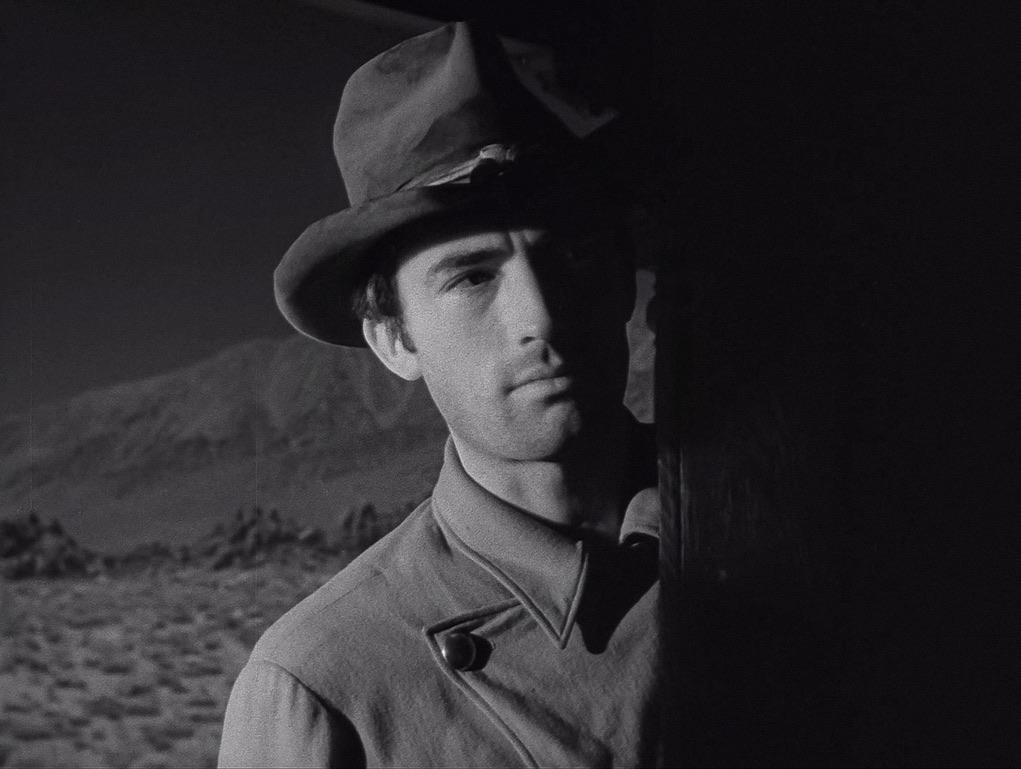
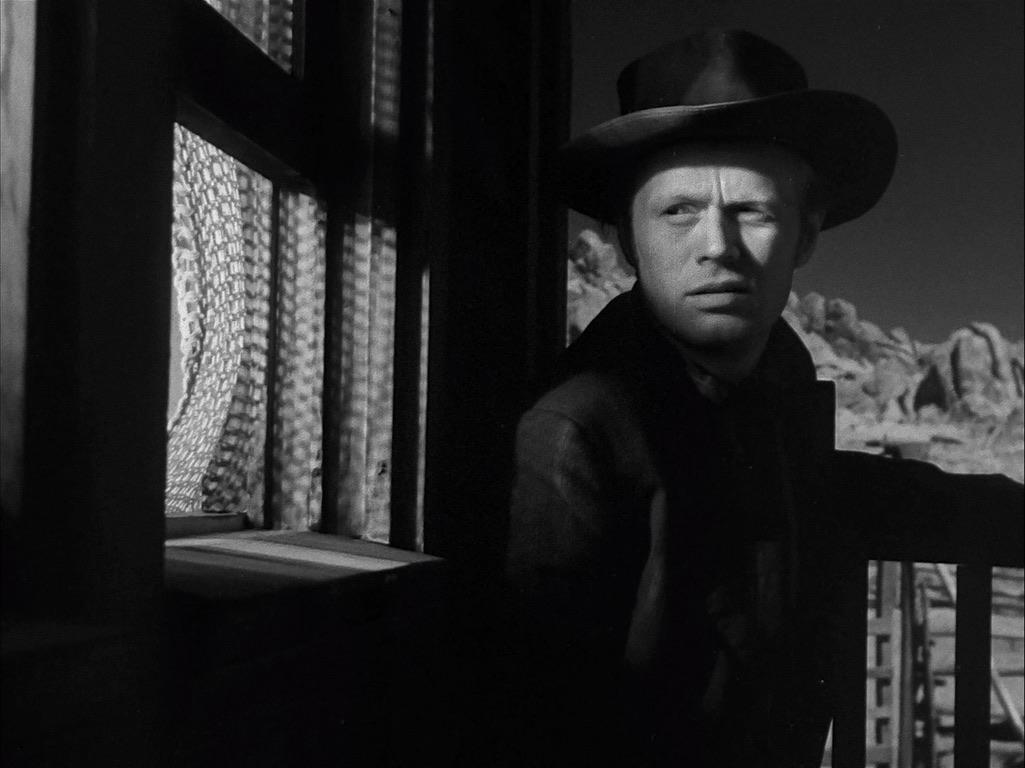 November 16, 2023 at 8:45 pm in reply to: Desert Chase at Dawn scene in No Country for Old Men #215266
November 16, 2023 at 8:45 pm in reply to: Desert Chase at Dawn scene in No Country for Old Men #215266Test.
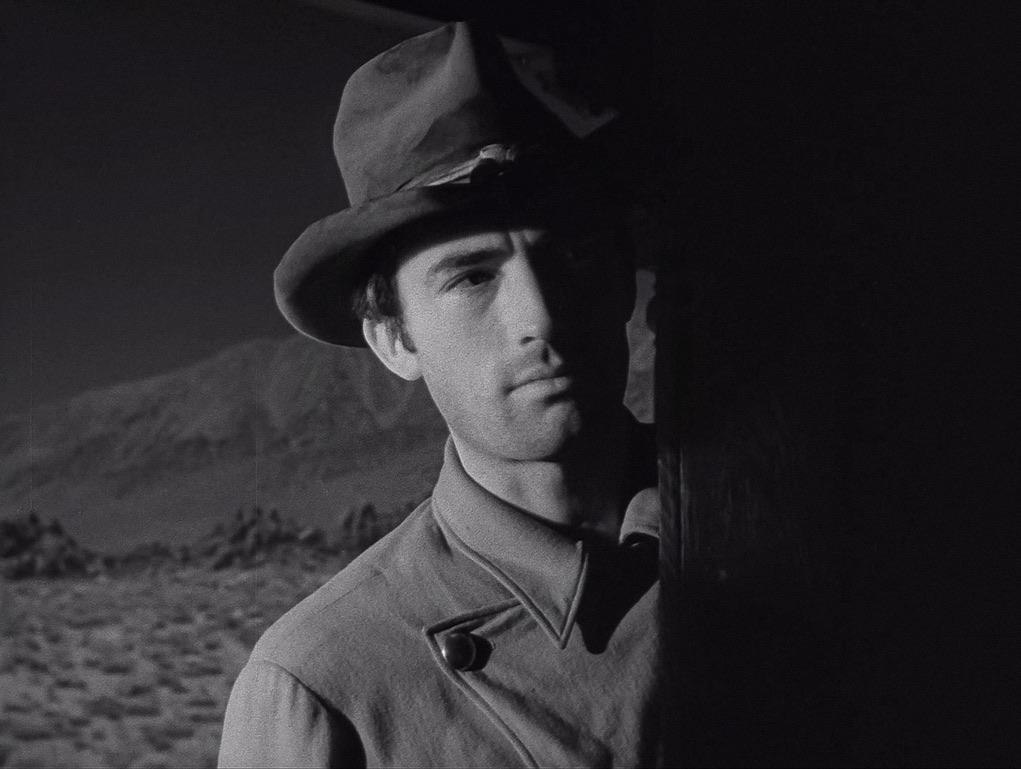 November 16, 2023 at 8:44 pm in reply to: Desert Chase at Dawn scene in No Country for Old Men #215265
November 16, 2023 at 8:44 pm in reply to: Desert Chase at Dawn scene in No Country for Old Men #215265I tried again — I give up! I guess it doesn’t like me putting images into the text.
November 15, 2023 at 9:13 am in reply to: Desert Chase at Dawn scene in No Country for Old Men #215258I typed a long reply and by the time I hit “submit” the website software didn’t accept it I guess! It disappeared!
-
AuthorReplies
